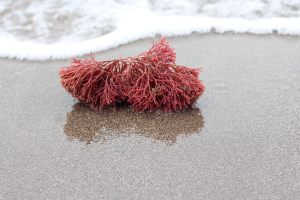Latest news
Differences between Gelidium and Gracilaria alga agars
Agar-agar comes from different sea vegetables, usually from algae. The most commonly used algae for its production are red Agarophyte algae. There are several species of these algae, but there are two in particular that stand out for their high agar-agar content: Gelidium and Gracilaria. Both produce agar with different features, as seen below.
But to understand the use of these two species, it is necessary to learn a bit of history. Agar was first used in Japan in the 17th century from Gelidium algae (Tengusa in Japanese). At the end of the 19th century, the increase in world consumption made it necessary to find other agar sources. Thus, the Gracilaria species started to be used, although the agar-agar obtained had different characteristics.
The main difference is its purity. Agar-agar obtained from Gelidium is considered to be of higher quality and, therefore, better raw material.
On the other hand, the process for obtaining agar-agar is different for each species. Gelidium algae agar does not need to undergo any chemical transformation during the harvesting process, while agar produced from Gracilaria needs a strong alkaline chemical treatment in order to enhance its gelling effect.

There are also differences in their origin. When Gracilaria algae were first used, they were found naturally in coastal areas of Argentina, Chile, Indonesia and Namibia. Cultivation methods were developed to meet the growing demand for these algae, both in ponds and in the open waters of protected bays. These methods have spread from Chile to other countries such as China, the Philippines, Indonesia, Namibia, the Republic of Korea and Vietnam. Gelidium algae only come from natural beds, mainly from Spain, France, Indonesia, Morocco, Mexico, Portugal and the Republic of Korea. On the other hand, unlike Gracilaria algae, which grows easily and has several annual harvests, the Gelidium algae is a small, slow-growing plant with a single annual harvest. Although efforts have been made to cultivate them in tanks and ponds, this was only possible from a biological point of view, because the lack of rocky bottoms and open sea prevents implementing large-scale Gelidium crops in the ocean
Regarding applications, the biggest advantage of Gelidium or Gracilaria agar is its gel point (the temperature at which it turns into a gel). Gelidium agar gels at a lower temperature, which is essential for microbiology applications. Also, Gelidium is the only species that can guarantee a bacteriological agar, as it grows in natural open beds and lacks growth inhibitors. These differences are not as essential in the food industry.
Agarmex has a wide range of products from the Gelidium and Gracilaria algae available for food applications, adapting to consumer requirements. Prioritizing the quality of its products, uses exclusively Gelidium algae for all its bacteriological agars.
Category: Food Agar, Bacto Agar





